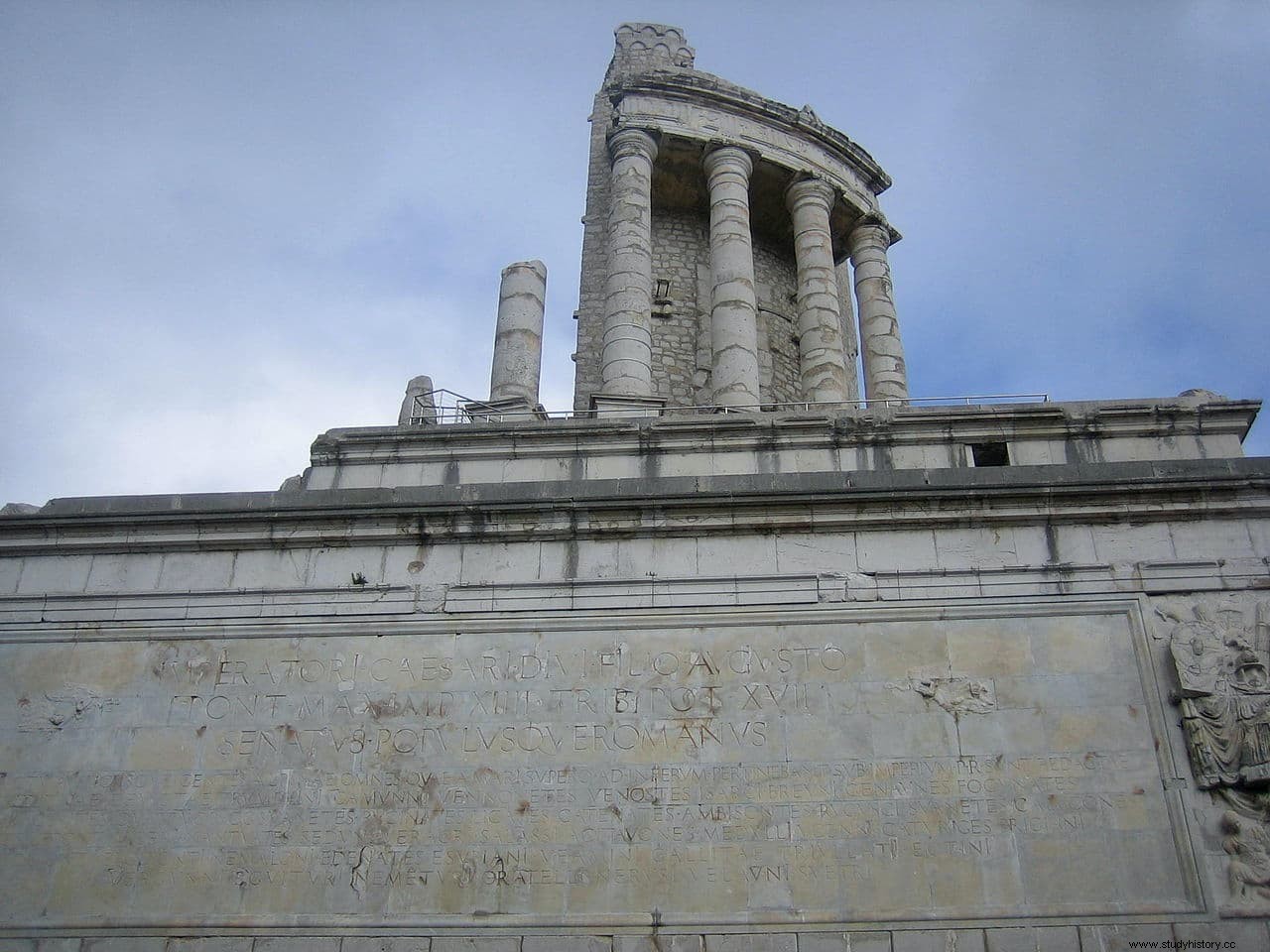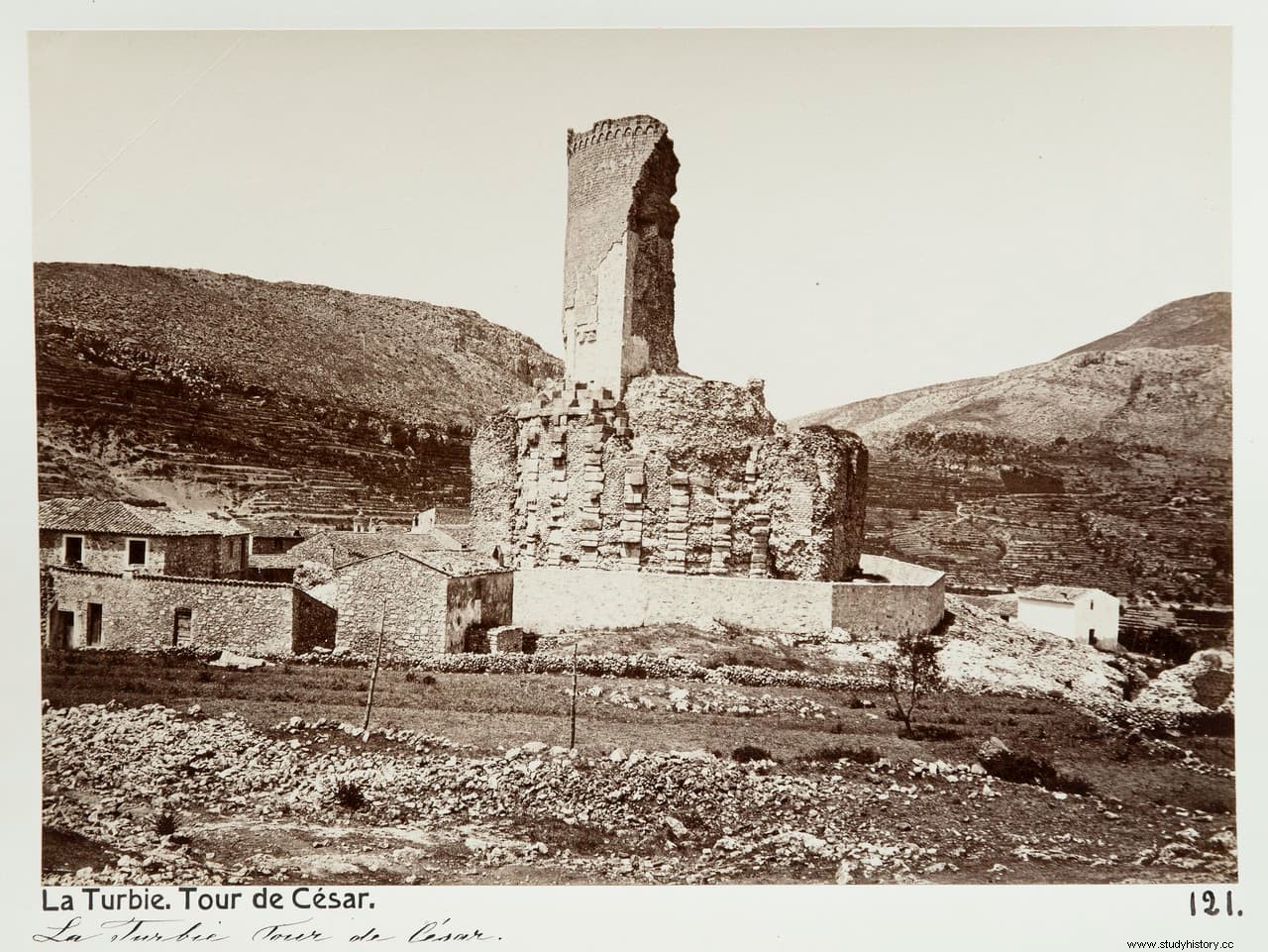On the Mediterranean coast of France, almost on the border with Italy, there is a town sadly famous for being the place where Grace Kelly, Princess of Monaco, died in a traffic accident in 1982. It is called La Turbie, a term that derives from Latin tropea And what does trophy mean? .
But the place was already famous long before, since ancient times. And it was there that the Emperor Augustus decided to build in the year 6 B.C. a singular monument, a trophy to celebrate his decisive victory over the Ligurian tribes of the Alps. It is therefore known as the Trophy of the Alps (in Latin Tropaeum Alpium ).

Rome had been fighting the tribes in the area since 25 BC, who had a bad habit of assaulting the Roman merchants who traveled along the roads of southeastern Gaul, thus controlling the transit of merchandise.
To celebrate the victory, Augustus had the trophy built, which had no defensive or military function beyond marking the border between the provinces of Italy and Narbonne Gaul.
It was made of stone extracted from a quarry located just 800 meters from the site, where remains of sections of columns carved into the rock can still be seen. At the time of its inauguration it was 35 meters high, including the podium or square platform of 12 meters high on two levels on which it stands, and which was 35 meters on each side.
Above it a circular colonnade consisting of 24 columns, and a stepped cone that was crowned by a statue of Augustus, and which made the whole rise up to 49 meters high. The colonnade niches contained statues of Augustus's generals. A stairway gave access from the second level of the platform to the colonnade.

In the dedication of the monument are engraved the names of all the defeated tribes, who were relocated to a new city called Cemenelum (today Cimiez, a neighborhood of Nice), according to Pliny the Elder, who made a transcript.

During the 12th to 15th centuries, the Trophy was converted into a fortress, and the local people built their houses against the walls at the base of the monument.
In 1705, during the war between France and Savoy in the War of the Spanish Succession, Louis XIV ordered the destruction of all the fortresses in the region, including the Trophy. Its demolished walls were used to extract stone for the construction of the houses of the town and the church of Saint-Michel, being badly damaged.
In 1929, the American philanthropist Edward Tuck financed the partial restoration work and founded the museum that bears his name, where models, molds, and old photographs documenting the work can be seen. The work was directed by Jules Formigé, and opened on April 26, 1934.
The town and the monument are located at the highest point of the Via Julia Augusta, from where you can see practically the entire principality of Monaco and the French Riviera to the Italian coast.
